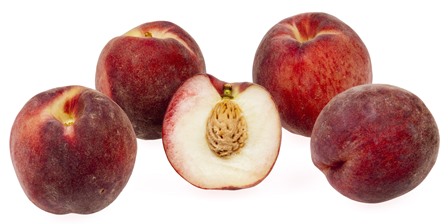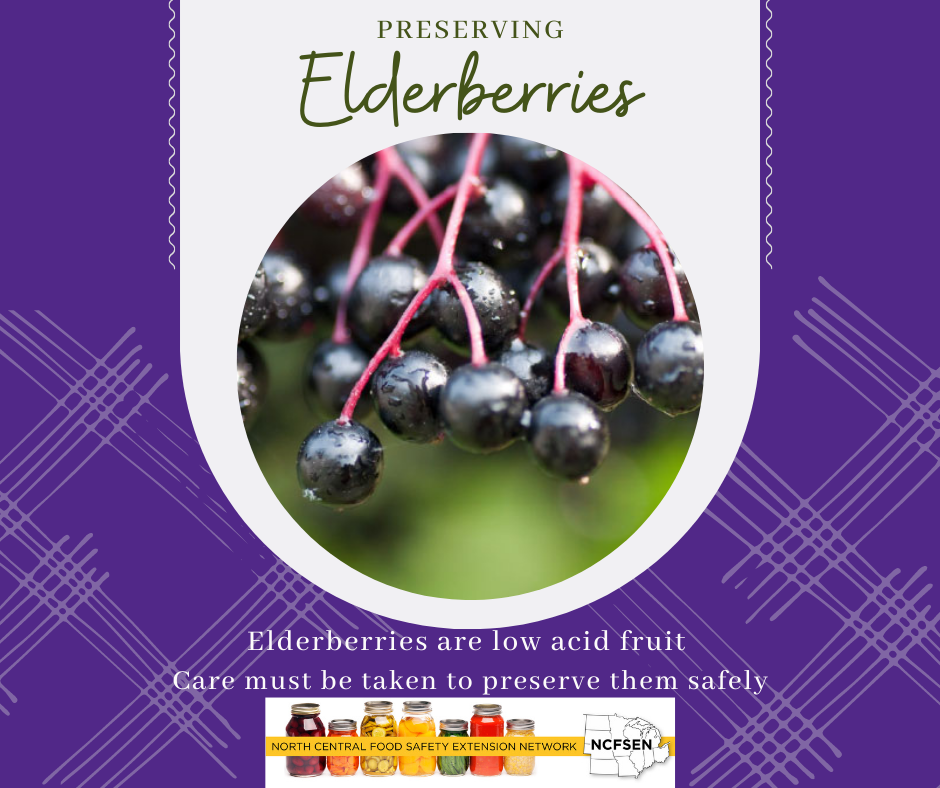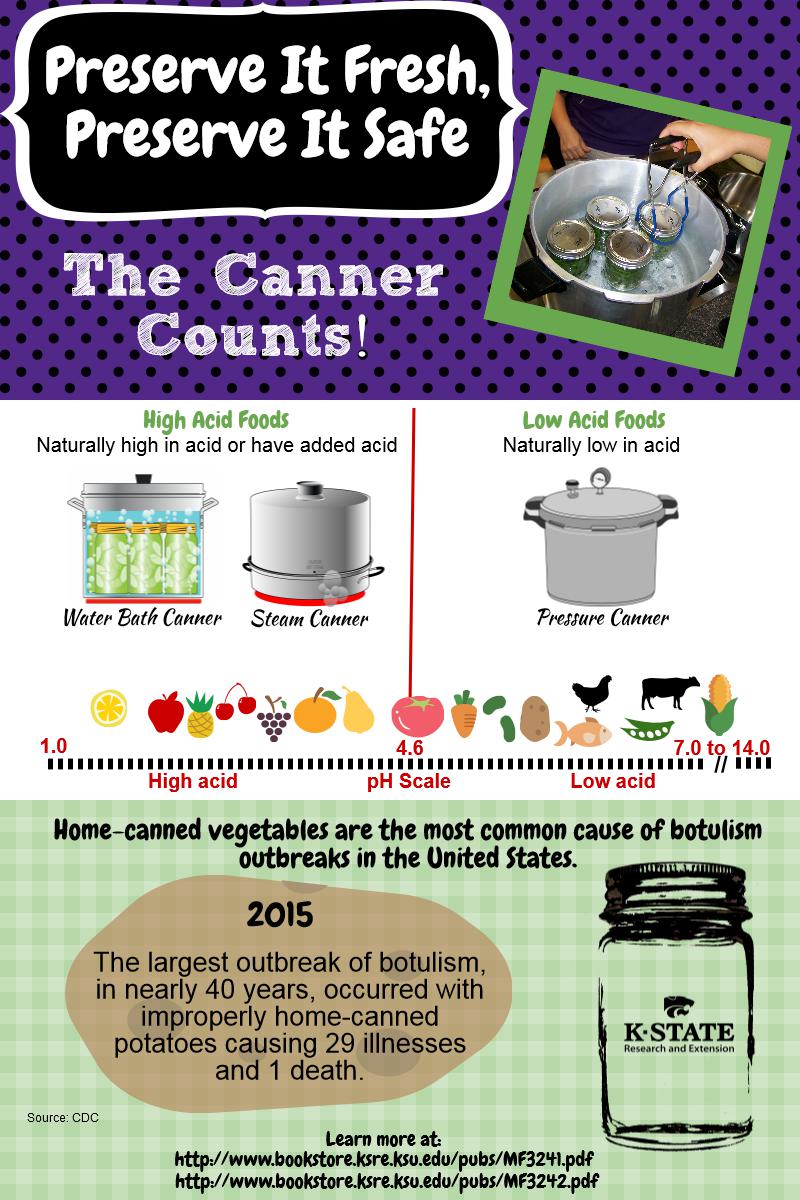Food Preservation
Home food preservation is a way to preserve the freshness of homegrown food. While more popular in years past, preserving food at home is still done today. Without factoring in the labor costs, home food preservation can save money compared to commercially preserved foods.
When done properly and safely, home preserved foods are a treat. But when improper practices and unsafe food handling techniques are used, the food can cause foodborne illness. Learn more about this at:
Home Canning and Botulism - Centers for Disease Control and Prevention

New publications from NCFSEN for you!
- Play It Safe! Safe Changes and Substitutions to Tested Canning Recipes
- Oops! Remaking Jams and Jellies
- Jar It Right!
- Put a Lid On It!
- Pressure Can It Right!
- Steam Can It Right!
Field to Fork - Play it Safe! Safe Changes to Tested Canning Recipes - April 2024
Preserving Elderberries
NEW Caution on Canning White Peaches
There is evidence that some varieties of white-flesh peaches are higher in pH (i.e., lower in acid) than traditional yellow varieties. The natural pH of some white peaches can exceed 4.6, making them a low-acid food for canning purposes. At this time there is no low-acid pressure process available for white-flesh peaches nor a researched acidification procedure for safe boiling water canning. Freezing is the recommended method of preserving white-flesh peaches.

Learn with Videos!
Do you learn visually? If so, these videos are for you! Topics include the science of home canning, choosing recipes, water bath canning, pressure canning, and much more.
Publications
- Recipe publications en Español - July 2016
- How-to Guide to Pressure Canning (Spanish)
- How-to Guide to Water Bath Canning and Steam Canning (Spanish)
- Here's the Dill!, video
- Guidelines of using an Atmospheric Steam Canner for Home Food Preservation - June 2015
- 10 Tips for Safe Home-Canned Food (Spanish)
- Sassy Safe Salsa at Home (Spanish)
- What's Your Elevation? (Spanish)
- Dry Meat Safely at Home (Spanish)
- New Ball Lids
- New Ball Jars
- Preserve It & Serve It - University of Georgia
Burning Issues!
- Newsflash Information - National Center for Home Food Preservation


